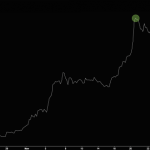
We suggested the market was at crossroads. It is still not clear if the dollar’s breakout, supported by higher yields is real or simply the fraying of ranges.
Asia has pushed the dollar broadly lower. While the greenback finished the North American session above JPY114.00 for the first time since July, the fact that the US 10-year yield could not push back above the 2.40% level, does not help confidence. The euro was bid to $1.1670 in Asia, its best level since the ECB meeting.
Similarly, the US dollar remains near a key technical level against the Canadian dollar (CAD1.2930), but has been unable to push higher. The greenback has appreciated by about 7.25% against the Loonie on the past two months (since September 8). The Australian and New Zealand dollar are also trading firmer, at their best levels in five or six sessions.
Asia sold the dollar seemingly in response to developments at the Federal Reserve, though there has been no surprises. Neither the FOMC decision nor the heightened speculation that Governor Powell will be nominated (and easily approved) as Fed Chair came as a surprise. The Fed upgraded its economic assessment. The December Fed funds futures contract closed unchanged for the eighth consecutive session on Wednesday, implying an average effective Fed funds rate of 1.275%. We estimate that if a 25 bp hike were fully discounted, fair value is 1.295%.
There has been much speculation over the past several months who Trump will pick as the next Fed Chair. On balance, while many acknowledge the fine job Yellen has done, steering the Fed through the tapering, initial rate increases, and now the balance sheet reduction,there is a sense that political considerations do not favor her reappointment.Indications from Washington have persuaded most observers that Powell will likely get the nod, but the surprise may be that Taylor may still in be in the running to replace Fischer, as Vice Chairman. By late yesterday, it was a foregone conclusion that Powell will succeed Yellen.














Leave A Comment